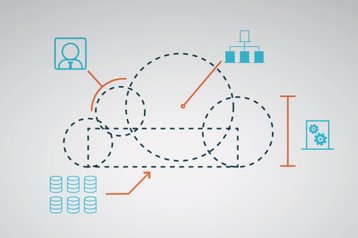As we speak, there are tense conversations about the cloud taking place in the C-suites of mid- to large enterprises in which the CIO, CFO and CTO are often sitting on opposites sides of the conference room table. Around the world, at the corporate headquarters of healthcare, media and entertainment, insurance, and financial services organizations, the case is being made to migrate to the cloud, or exit an oversubscribed cloud that has failed to deliver on its promises. Reputations, even employment in some cases, are on the line.
For any enterprise to confidently begin the journey toward digital transformation, like any journey, it’s best undertaken with a map and a guide. Companies need to embrace change, but they also must do so with a trusted provider that will take them through the entire lifecycle of cloud migration – not just sell them a consultancy service, but also execute and deliver once the ink on the contract has dried.
The key to success in the cloud is to look at private, hybrid and multi-cloud environments and not only maintain them on an ongoing basis to ensure security and performance, but also provide optimization based on the applications at the edge of the network.
Below, we will explore the top five barriers preventing enterprises from migrating to a hybrid cloud environment, and how you can avoid them with this one simple step.
1. Absence of a support network
When things go awry, it’s important that companies have a strong support network in place to ensure problems are quickly rectified with minimal impact on their business and operations. A digital concierge of sorts is necessary to guide your management team toward success with keen insight and extensive problem-solving experience. Without an adequate support network, both during digital transformation and throughout the lifecycle of your cloud solution, it is common for an organization to choose a cloud model that is ill-suited to its unique business structure, resulting in undue strain on capital expenses and management resources.
2. Limited understanding of current pain points
Whether it’s achieving the necessary security to keep themselves from being vulnerable to cyberattack or ensuring compliance with industry standards, it is critical for any company to recognize where its cloud solution may fall short and how to fix it. Oftentimes, organizations don’t realize that they are vulnerable to attack or aren’t meeting the necessary standards, but that doesn’t make them any less accountable in the event of security breach or regulatory fines and penalties. Before you can fix the problem, you must be able to identify that it exists and have the knowledge, insight and ability to rectify the issue before your business suffers the consequences.
3. Oversubscription in the public cloud
As cloud migration becomes commonplace for enterprises, they are moving assets to the public cloud in droves, placing a major strain on the resources of even the largest hyperscale providers. As a result, many of these cloud providers are oversubscribing as they sell more resources than are actually available. While this is a common practice in the hyperscale cloud marketplace, it can lead to complex issues for subscribers.
Oversubscription in the cloud leads to potential overload, which can be disastrous for your business. With the necessary knowledge and experience, experts are able to help deploy private and hybrid cloud models that combat the issue of oversubscription while helping to identify the most advantageous providers to suit your individual needs.
4. Budget and resource limitations
Whether they are challenged by high capital expense, limited access to skilled IT professionals or simply how many man-hours the organization is willing to dedicate, many companies are hitting a brick wall when it comes to procuring the necessary resources to embrace cloud migration. For many, partnership with an expert service provider is the only way to ensure that all needs are met with budget and resource constraints in mind.
5. Complexity
Enterprise cloud migration, management and maintenance can be a particularly complex undertaking when you are not equipped with the right knowledge and tools to ensure effective deployment and ongoing functionality. Complex system configurations are often required to meet security and compliance requirements of a business environment, as well as dependency on external components, including databases, load balances and storage. Identifying a solution that is designed to suit your individual needs can be a daunting task and upkeep nearly impossible for the inexperienced or novice IT professional.
Overcoming these challenges and barriers is intimidating for many, but necessary for all. However there is a simple solution. Those looking to remove all concerns should engage a colocation, network and managed services provider that is sufficiently agile to build, customize, deliver and support a multi-cloud solution from day one – bringing the hybrid cloud to you.
Robert Henley is COO of Agile Data Sites, an American IT infrastructure and data center company


